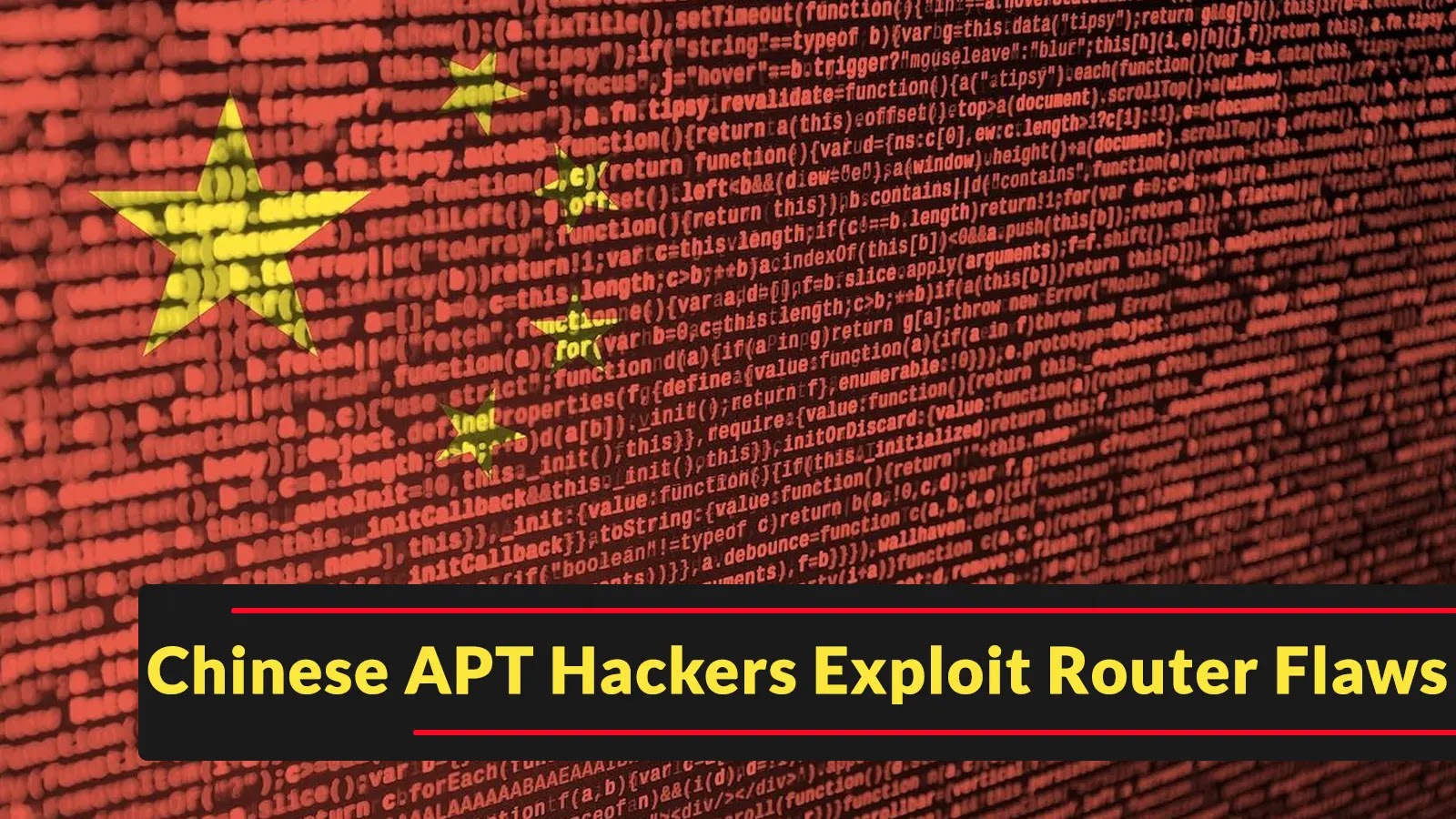
Chinese APT Hackers Exploit Router Vulnerabilities to Infiltrate Enterprise Environments
The Silent Infiltration: Chinese APTs Target Enterprise Routers
The digital perimeter of modern enterprises, once primarily defined by firewalls and endpoint security, is facing an increasingly sophisticated and insidious threat. For years, state-sponsored Advanced Persistent Threat (APT) groups, largely originating from China, have systematically exploited critical vulnerabilities in enterprise-grade routers. This isn’t merely about data breaches; it’s about establishing deep, long-term footholds within the very backbone of global telecommunications and governmental networks. This analysis delves into the methodologies of these groups, the implications of their campaigns, and the essential steps organizations must take to secure their critical infrastructure.
Understanding the Adversary: Salt Typhoon and OPERATOR PANDA
The campaign, a concerted effort over several years, reveals a clear strategic objective: gaining persistent access to sensitive networks. These threat actors, often tracked under monikers such as Salt Typhoon and OPERATOR PANDA, demonstrate a high degree of organization, technical prowess, and patience. Their targeting is precise, focusing on provider edge (PE) and customer edge (CE) routers – devices that bridge internal networks with external service providers and the internet. Compromising these devices grants attackers not only a gateway into internal systems but also a vantage point for monitoring, redirecting traffic, and launching further attacks without immediate detection.
The Router as a Foothold: Why It’s a Prime Target
Routers are often overlooked in the grand scheme of enterprise security, frequently seen as mere conduits rather than critical attack surfaces. This perception is a dangerous oversight. They operate at a foundational level of network infrastructure, making them an ideal, low-profile entry point for APTs. Exploiting router vulnerabilities allows these groups to:
- Establish persistence that often survives reboots, making eradication difficult.
- Bypass traditional network defenses, as traffic flows through compromised devices.
- Perform intelligence gathering and reconnaissance from within the network.
- Lay the groundwork for future operations, including data exfiltration and further lateral movement.
The objective is not a smash-and-grab; it’s a long-term strategic advantage, enabling espionage and potentially destructive capabilities.
Exploited Vulnerabilities and CVEs
While specific CVEs were not detailed in the provided source, past campaigns often leverage known, and sometimes zero-day, vulnerabilities in network devices. These can include:
- Authentication Bypass: Bypassing login credentials to gain unauthorized access.
- Command Injection: Injecting malicious commands into vulnerable web interfaces or CLI.
- Firmware Vulnerabilities: Exploiting flaws in the router’s operating system to gain root access.
- Weak Default Credentials / Unpatched Software: The most common entry points for many attackers, including APTs.
Organizations must remain vigilant for publicly disclosed router vulnerabilities. Examples of critical router vulnerabilities that have been previously exploited by various threat actors include:
- CVE-2023-20109: A critical vulnerability in Cisco IOS XE that allowed unauthenticated adversaries to create privileged user accounts.
- CVE-2021-34401: Part of a set of vulnerabilities affecting SonicWall SSL VPN, often associated with nation-state actor exploitation.
Staying current with vendor advisories and timely patching are paramount defensive measures.
Remediation Actions and Proactive Defense
Defending against highly motivated and sophisticated APTs requires a multi-layered and proactive approach, with a particular focus on network infrastructure security.
- Patch Management: Implement a rigorous and timely patching schedule for all network devices, including routers, switches, and firewalls. Subscribe to vendor security advisories and act immediately upon critical patches.
- Strong Authentication: Enforce strong, unique passwords for all router accounts. Implement multi-factor authentication (MFA) wherever supported, especially for administrative interfaces. Disable default credentials.
- Network Segmentation: Isolate critical networks and systems using VLANs and strict access control lists (ACLs). Limit administrative access to routers to specific, trusted networks.
- Disable Unused Services: Turn off any unnecessary services, ports, and protocols on routers. Reduce the attack surface by eliminating entry points.
- Logging and Monitoring: Enable comprehensive logging on all network devices. Integrate router logs with your Security Information and Event Management (SIEM) system for centralized monitoring, anomaly detection, and rapid response to suspicious activity.
- Regular Audits and Configuration Reviews: Periodically audit router configurations for unauthorized changes, weak settings, and adherence to security baselines.
- Threat Intelligence Integration: Leverage up-to-date threat intelligence feeds to identify indicators of compromise (IOCs) associated with these APT groups and proactively block known malicious IPs or domains related to their operations.
Tools for Detection, Scanning, and Mitigation
| Tool Name | Purpose | Link |
|---|---|---|
| Nmap (Network Mapper) | Network discovery and security auditing, including port scanning for open services on routers. | https://nmap.org/ |
| OpenVAS / Greenbone Vulnerability Management | Comprehensive vulnerability scanning, identifying known vulnerabilities in network devices like routers. | https://www.greenbone.net/ |
| Wireshark | Network protocol analyzer for deep inspection of network traffic, aiding in detecting anomalous router behavior. | https://www.wireshark.org/ |
| Zeek (formerly Bro) | Network security monitor for high-fidelity transaction logging and policy enforcement point detection on network infrastructure. | https://zeek.org/ |
| SIEM Solutions (e.g., Splunk, QRadar, Elastic Stack) | Centralized log management, correlation, and alerting for security events from routers and other network devices. | (Vendor Specific) |
Conclusion: Fortifying the Foundation
The exploitation of router vulnerabilities by Chinese APT groups like Salt Typhoon and OPERATOR PANDA underscores a fundamental truth in cybersecurity: an organization’s security is only as strong as its weakest link. Overlooking network infrastructure, particularly routers at the edge, creates significant opportunities for sophisticated adversaries to gain persistent and privileged access. Proactive patching, stringent access controls, vigilant monitoring, and continuous security audits are not merely best practices; they are indispensable lines of defense against state-sponsored infiltration. Securing the network’s foundation is paramount to protecting critical enterprise and governmental assets against these evolving threats.





